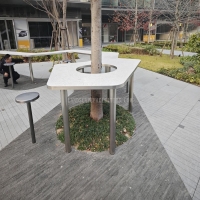Welcome to the website for landscape facilities products and knowledge.
How does the table’s design account for ease of access for users with limited mobility?
Modern table design has evolved significantly to accommodate users with limited mobility through thoughtful engineering and inclusive design principles. Designers now prioritize accessibility by implementing specific height adjustments that accommodate wheelchair users, typically maintaining a clearance of 27 inches from the floor to the table's underside. The incorporation of adjustable mechanisms allows tables to be raised or lowered between 28 to 34 inches, catering to various user needs and preferences.
Tables designed for accessibility feature rounded corners and soft edges to prevent injuries, while maintaining a minimum knee clearance of 19 inches in depth. The selection of materials also plays a crucial role, with non-slip surfaces and appropriate texture contrasts helping users with visual impairments or limited dexterity. Many contemporary designs incorporate extended table edges that provide easier reach for seated users, while maintaining structural stability through weighted bases that prevent tipping.
Advanced designs often include integrated technology solutions such as built-in power outlets and USB ports at accessible heights, eliminating the need for users to stretch or strain. The implementation of universal design principles ensures that these accessibility features blend seamlessly with aesthetic considerations, creating furniture that is both functional and visually appealing. Manufacturers are increasingly focusing on creating tables that meet ADA standards while maintaining commercial viability and design elegance.
Research shows that properly designed accessible tables can improve user independence and participation in various settings, from educational institutions to corporate environments. The growing emphasis on inclusive design reflects a broader understanding that accessibility benefits all users, not just those with specific mobility challenges. Through continuous innovation and user-centered design approaches, the furniture industry is making significant strides in creating environments that welcome everyone equally.
Related search:

Recommendation
An outdoor bar counter with stainless steel and terrazzo materials in an irregular shape